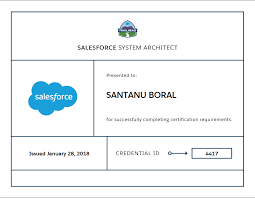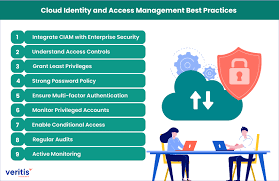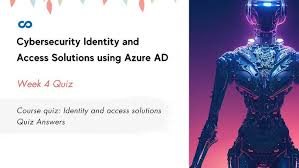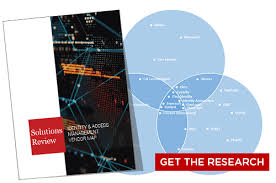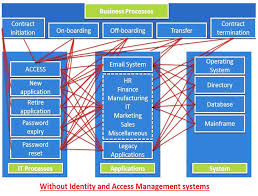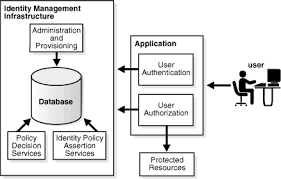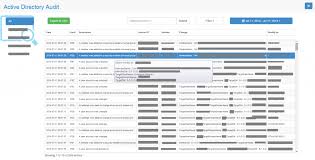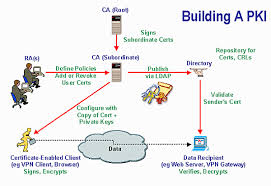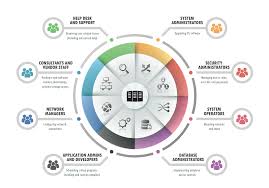The Importance of Identity Access Management in Salesforce
Identity Access Management (IAM) plays a crucial role in ensuring the security and efficiency of Salesforce implementations for businesses of all sizes. Salesforce, being a leading customer relationship management (CRM) platform, contains sensitive data that must be protected from unauthorised access while ensuring that legitimate users have the necessary access levels to perform their tasks.
Key Components of IAM in Salesforce
User Provisioning: IAM allows administrators to manage user accounts efficiently by granting or revoking access based on roles and responsibilities within the organisation. This ensures that only authorised individuals can access specific data and functionalities within Salesforce.
Single Sign-On (SSO): SSO integration enhances user experience by enabling users to log in once and access multiple applications, including Salesforce, without the need to enter credentials repeatedly. This not only simplifies user access but also strengthens security by reducing the risk of password-related vulnerabilities.
Multi-Factor Authentication (MFA): MFA adds an extra layer of security by requiring users to provide multiple forms of verification before accessing Salesforce. This could include something they know (password), something they have (mobile device), or something they are (biometric data), making it significantly harder for unauthorised users to gain entry.
Benefits of Implementing IAM in Salesforce
Enhanced Security: IAM helps safeguard sensitive data within Salesforce by controlling user access and enforcing security policies such as strong passwords, session timeouts, and activity monitoring.
Regulatory Compliance: Many industries have strict regulations regarding data privacy and security. Implementing IAM in Salesforce helps organisations comply with regulatory requirements by controlling user access, tracking user activities, and maintaining audit trails.
Improved Productivity: By streamlining user authentication processes through SSO and providing secure remote access via MFA, IAM enhances user productivity and reduces the time spent on managing multiple login credentials.
Conclusion
In conclusion, Identity Access Management is essential for maintaining a secure and efficient Salesforce environment. By implementing robust IAM practices such as user provisioning, SSO, and MFA, organisations can protect their valuable data assets while empowering users with seamless access to the CRM platform.
Top 9 Advantages of Identity Access Management in Salesforce: Boosting Security, Compliance, and Efficiency
- Enhances data security by controlling user access levels
- Streamlines user provisioning and de-provisioning processes
- Improves compliance with data privacy regulations
- Reduces the risk of unauthorised data breaches
- Increases productivity by simplifying user authentication
- Enables seamless integration with other applications through SSO
- Provides detailed audit trails for monitoring user activities
- Enhances user experience by enabling convenient access to Salesforce
- Strengthens overall cybersecurity posture of the organisation
Challenges in Implementing Identity Access Management with Salesforce: Complexity, Resistance, Costs, and Maintenance
Enhances data security by controlling user access levels
One significant advantage of implementing Identity Access Management (IAM) in Salesforce is its ability to enhance data security by controlling user access levels. By defining and managing user permissions based on roles and responsibilities, IAM ensures that only authorised individuals can access specific data and functionalities within the Salesforce platform. This granular control over user access not only reduces the risk of unauthorised data breaches but also helps organisations maintain the confidentiality and integrity of their sensitive information.
Streamlines user provisioning and de-provisioning processes
Streamlining user provisioning and de-provisioning processes is a key advantage of Identity Access Management in Salesforce. By efficiently managing the onboarding and offboarding of users, organisations can ensure that individuals have the appropriate access levels to Salesforce resources based on their roles and responsibilities. This not only enhances security by reducing the risk of unauthorised access but also improves operational efficiency by automating user account setup and removal processes. Additionally, streamlined provisioning and de-provisioning help organisations maintain compliance with data protection regulations by promptly revoking access for departing employees or contractors.
Improves compliance with data privacy regulations
Identity Access Management in Salesforce significantly enhances compliance with data privacy regulations by providing robust control over user access and activities within the platform. By implementing IAM practices such as role-based access control, audit trails, and user authentication mechanisms like Multi-Factor Authentication (MFA), organisations can ensure that sensitive data is accessed only by authorised personnel in accordance with regulatory requirements. This proactive approach not only helps in preventing data breaches but also demonstrates a commitment to protecting customer information and upholding legal standards related to data privacy.
Reduces the risk of unauthorised data breaches
Implementing Identity Access Management (IAM) in Salesforce significantly reduces the risk of unauthorised data breaches by controlling user access and enforcing strict security measures. By carefully managing user permissions and authentication processes, IAM ensures that only authorised individuals can access sensitive information within the Salesforce platform. This proactive approach to security helps prevent cyber threats and data breaches, safeguarding valuable business data and maintaining the integrity of the CRM system.
Increases productivity by simplifying user authentication
One significant advantage of implementing Identity Access Management (IAM) in Salesforce is its ability to enhance productivity by simplifying user authentication processes. By utilising IAM solutions such as Single Sign-On (SSO), users can conveniently access Salesforce and other applications with a single set of credentials, eliminating the need to remember multiple passwords. This streamlined authentication not only saves time for users but also reduces the administrative burden associated with managing numerous login credentials, ultimately boosting overall efficiency within the organisation.
Enables seamless integration with other applications through SSO
One significant advantage of implementing Identity Access Management in Salesforce is its ability to facilitate seamless integration with other applications through Single Sign-On (SSO). By utilising SSO, users can access multiple applications, including Salesforce, with a single set of credentials. This not only enhances user experience by eliminating the need for repetitive logins but also streamlines workflow efficiency across various platforms. With SSO integration, organisations can achieve a unified authentication process that promotes productivity and security while ensuring a seamless user experience.
Provides detailed audit trails for monitoring user activities
Identity Access Management in Salesforce offers a significant advantage by providing detailed audit trails for monitoring user activities. This feature allows organisations to track and review every action taken within the system, including logins, data modifications, and access requests. By maintaining comprehensive audit logs, businesses can enhance security measures, detect suspicious behaviour promptly, and ensure compliance with regulatory requirements. The ability to monitor user activities through detailed audit trails not only strengthens data protection but also promotes transparency and accountability within the Salesforce environment.
Enhances user experience by enabling convenient access to Salesforce
Identity Access Management in Salesforce significantly enhances user experience by enabling convenient access to the platform. With features like Single Sign-On (SSO), users can seamlessly log in once and access Salesforce and other integrated applications without the hassle of multiple login credentials. This streamlined access not only saves time but also improves user satisfaction and productivity, ultimately leading to a more efficient and user-friendly experience within the Salesforce environment.
Strengthens overall cybersecurity posture of the organisation
Implementing Identity Access Management in Salesforce significantly strengthens the overall cybersecurity posture of the organisation. By controlling user access, enforcing authentication protocols, and monitoring user activities, IAM helps prevent unauthorised users from infiltrating sensitive data within Salesforce. This proactive approach to security not only mitigates the risk of data breaches but also enhances the organisation’s resilience against cyber threats, safeguarding critical information and maintaining trust with customers and stakeholders.
Complex Implementation
Implementing Identity Access Management in Salesforce can present a significant challenge due to its complexity and time-consuming nature. The process demands a high level of expertise and meticulous planning to ensure seamless integration and functionality. Organisations may encounter hurdles in configuring user roles, setting up permissions, and establishing secure authentication protocols within the Salesforce environment. Despite the potential complexities, investing time and resources in a well-thought-out IAM implementation is crucial for maintaining data security and regulatory compliance within Salesforce.
User Resistance
User Resistance can pose a significant challenge when implementing Identity Access Management in Salesforce. Some users may be reluctant to adopt IAM measures, particularly multi-factor authentication (MFA), due to perceived inconvenience or unfamiliarity with additional security steps. This resistance can result in usability issues as users may find the authentication process cumbersome or time-consuming. Addressing user resistance requires effective communication, training, and support to help users understand the importance of IAM measures and how they contribute to overall data security and compliance within the Salesforce environment. By proactively addressing user concerns and providing adequate training, organisations can mitigate potential usability issues and ensure a smoother transition to enhanced security practices.
Costly Integration
One significant drawback of implementing Identity Access Management (IAM) in Salesforce is the costly integration process. Integrating IAM solutions with Salesforce often involves additional expenses for licensing, maintenance, and ongoing support. These costs can pose a financial challenge for organisations looking to enhance security and user management within their Salesforce environment. The need to allocate resources for integrating IAM systems with Salesforce may deter some businesses from fully realising the benefits of robust identity access controls, especially those operating on tight budgets or with limited IT resources.
Overhead Maintenance
One significant drawback of Identity Access Management in Salesforce is the overhead maintenance it entails. Constantly managing IAM configurations and user access levels in Salesforce demands ongoing attention and resources, making it a potentially resource-intensive task for organisations. The need for regular updates, adjustments, and monitoring to ensure that access controls align with evolving business requirements can impose a burden on IT teams and administrators, diverting their focus from other critical tasks within the organisation.

